Turn old neckties into beautiful easter eggs
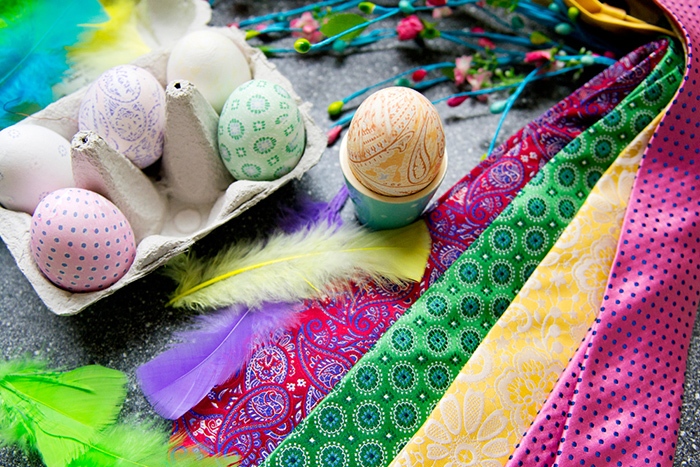
The yellow feast is soon upon us, and the crew here at Tieroom of course want to contribute to the Easter decorations. There is nothing wrong with coloured feathers, chickens and Easter bunnies but we suggest you go outside of the box and try a “tie egg” :)
Since we have the privilege to hang out with hundreds of awesome tie patterns daily, the idea to transfer our silk designs to eggs came quite easily. The question was how to do it - you have the answer below:
Ingredients - this is what you need:
- Eggs
- Silk neckties or pocket squares (cotton, wool or polyester won't work)
- Scissors
- Thin, light (preferrably white) cotton cloth
- Colourless string
- A pot or saucepan
- Water and white wine vinegar (roughly 1 part vinegar to 4 parts water= 0,6 dl vinegar to 3 litres of water.
Furthermore you’ll probably need:
- Lust for experimentation
- Patience
- Precision
- A forgiving attitude toward the possibility of failure
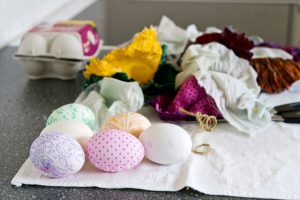
Keep in mind... We noticed that strong colours in darker shades and with clear, fun patterns give best results - the colours turn out much more vague than on the silk when transferred to the eggs, so if you use lighter colours they will just barely be visible on the eggs. A trip to a cheap second hand store might be a good idea for this project - evidently for economic reasons, but also because you often find a lot of really juicy, fun patterns at second hand stores. The ones you maybe wouldn’t choose for a Friday night out might be the one the gives the most gorgeous “tie hugged” Easter egg.
Directions:
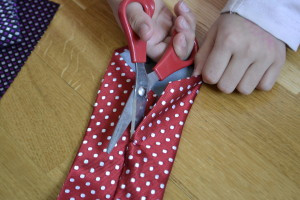
1.Butcher the tie! Cut the stitch/stitches on the back of the tie and remove the interlining (the material inside of the silk, that gives the tie support, desired thickness and pliancy. Once that’s done it should be quite easy to spread it out into a cloth.
2.Measure and cut a piece of silk that covers the egg and leaves just enough excess cloth to tie the string in. When you’ve know you have the right size you can always use that bit as a template, so you economize with your silk, of course while keeping in mind that eggs can vary quite a lot in size - especially happy, healthy eggs :)
3.Nice’n tight! It’s the “fron” of the silk that should be turned towards the egg. Fix the silk as tightly as possible to the egg, and try to avoid folds. Be careful - eggs are fragile as you know, and it’s easy to get a bit rough in your efforts to get it nice and tight. However, tight and foldless is the critical factor for a successful “pattern transfer” from tie silk to egg.
4.All tied up! Once your little parcel is tightly wrapped you’ll have to tie it up top with the colourless string, without the silk losing the direct contact with the egg. This is a bit of a challenge - but you know what they say: too easy, no fun. Good ideas for this step is to bring out your patience and/or do the string procedure together with someone. Together is more fun. In the spots where the silk loses contact with the egg or is folded, the colours will be more blurred, a bit like water colours - and that can be beautiful too.

5.The outer layer. Repeat the steps from the Aim and cut-section with the light, thin cotton fabric.
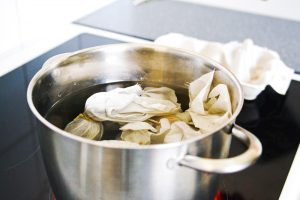
6.Colour cooking. Put the egg parcels carefully in the pot, pour up enough water to cover the eggs, add vinegar, about a quarter of the water amount. Make it boil and then leave the eggs boiling in the pot for about 20 minutes.
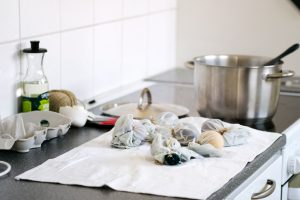
7.Cooked! Take the eggs out of the pot with a skimmer (a big ladle with holes in it) and let them cool off on a towel or some paper towels. Indoors it might be up to a couple of hours too cool off. Maybe you find it boring to wait for the result, but we try to think of it as the longing, wonderful wait for the Christmas gifts. In today’s stressful society a small involuntary wait feels great. Why not mix up an Easter toddy and give a surprise call to a good friend. If it’s not too cold outside you can always speed up the cooling down process by putting the outside.
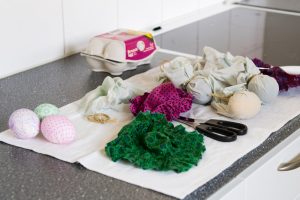
8.Unwrapping time! Finally! Bring out your forgiving attitude as you carefully unwrap the two layers of cloth and behold your creation. Maybe you didn’t get colour all over, but this isn’t easy, and more than likely you’re still standing with the pretties Easter egg you’ve ever made in your hand. Whatever you do, don’t comfort yourself by eating the eggs, not even if you prefer hard-boiled - 20 minutes is probably a bit too much even for the most convinced hard-boil believer. We hope you’re happy with your tie hugged eggs and wish you all a suberbly relaxing or eventful Easter week, whichever you prefer. We like our eggs - a perk for us was that our eggs lent their patterns from the up-coming silk collection.
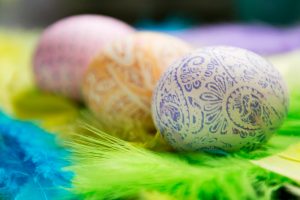
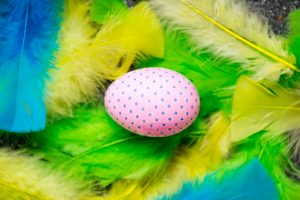
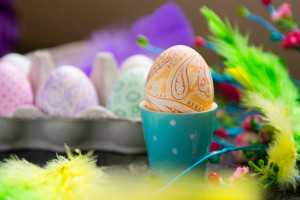
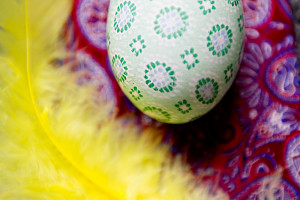 Happy Easter from the Tieroom crew
Happy Easter from the Tieroom crew










